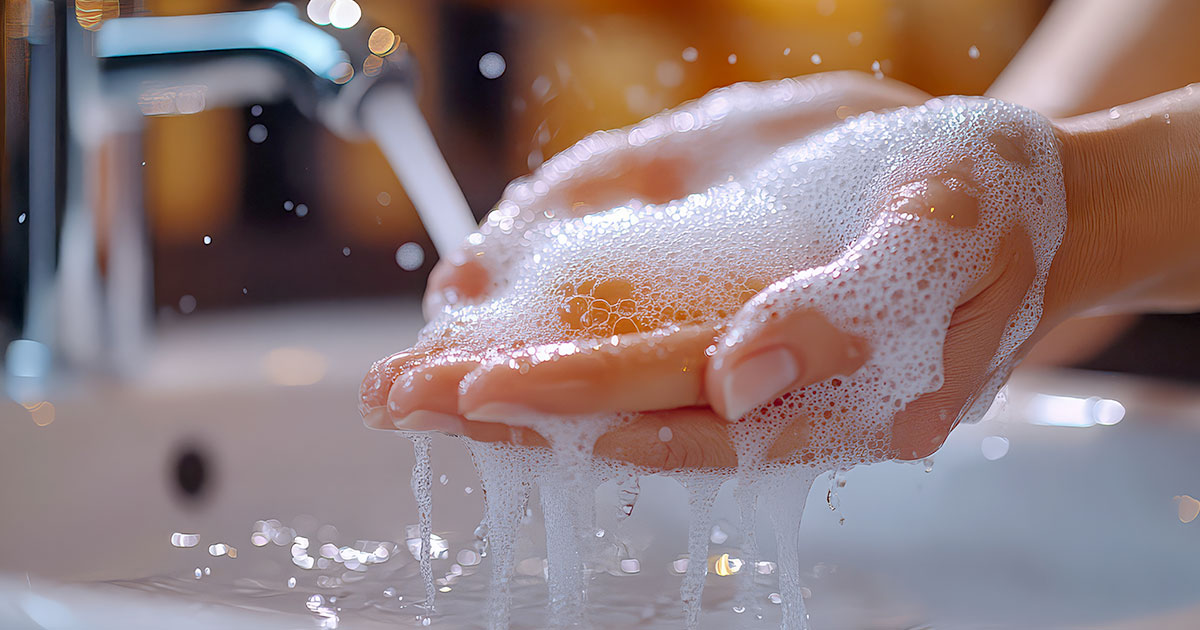4 min read
Faulty Handwashing Sensors Cause Drama: Avoid Customer Complaints!
A drama unexpectedly unfolded off-stage at a prominent performing arts center in the New York metropolitan area. The theater’s issue is shining a...
2 min read
 Lesleigh Rickerson
:
October 15, 2025
Lesleigh Rickerson
:
October 15, 2025

Handwashing might seem simple, but it’s one of the most effective tools your facility has for preventing illness and maintaining a safe, healthy environment. According to the CDC, proper hand hygiene can dramatically reduce the spread of germs that cause common infections—protecting staff, guests, and your bottom line1.
In every type of facility, from schools and hospitals to office buildings and large venues, hands are the most common vehicle for spreading germs. Every door handle, light switch, and shared surface can harbor bacteria and viruses that easily transfer from one person to another.
The CDC notes that handwashing with soap and water removes germs more effectively than water alone.² When done regularly, this simple habit can reduce the risk of respiratory infections by up to 21%³ and diarrheal diseases by up to 40%.⁴
Good hand hygiene isn’t just a personal responsibility. It’s a shared standard that defines your facility’s commitment to well-being and professionalism.
Facility occupants and staff should wash their hands frequently, but there are key times when it’s especially critical:

Before, during, and after preparing food

Before eating or touching your face

After using the restroom

After coughing, sneezing, or blowing your nose

After handling trash, shared equipment, or cleaning supplies

After caring for someone who is ill
Posting clear signage near sinks, food areas, and restrooms can help reinforce these habits and remind everyone that health starts with clean hands.
To make hand hygiene second nature, facilities should:
Partner with suppliers that can help evaluate product performance and refill frequency.
At BradyPLUS, we help facilities implement comprehensive hygiene programs that go beyond compliance—supporting healthier environments and happier occupants.
Additionally, each year on October 15, the world recognizes Global Handwashing Day, an international awareness campaign dedicated to promoting the importance of clean hands.5 It’s an excellent opportunity for facilities to re-engage employees, launch hygiene challenges or reminders, and refresh hand hygiene supplies and signage. A single day of awareness can spark long-term behavioral changes that support healthier workplaces year-round.
The CDC outlines five simple steps for effective handwashing:6

Wet hands with clean, running water

Lather with soap, including the backs of hands, between fingers, and under nails

Scrub for at least 20 seconds—about the time it takes to hum "Happy Birthday" twice

Rinse under running water

Dry with a clean towel or air dryer
When soap and water aren’t available, use an alcohol-based hand sanitizer containing at least 60% alcohol until you can reach a sink.7
Handwashing is one of the easiest and most cost-effective ways to prevent the spread of illness in your facility. From reducing absenteeism to creating safer, more inviting environments, the benefits extend far beyond the sink.
It’s a small act that delivers a big return for your people, your guests, and your business.
Ready to strengthen your facility’s hygiene strategy? Connect with BradyPLUS to explore tailored hand hygiene solutions that protect people, enhance efficiency, and reinforce your commitment to health and safety.
Sources
1. About Handwashing - CDC
2. Handwashing Facts - CDC
3. Hand Hygiene - CDC
4. Handwashing Facts - CDC | Clean Hands
5. Global Handwashing Day - CDC
6. When and How to Wash Your Hands - CDC
7. Hand Sanitizer Use - CDC

4 min read
A drama unexpectedly unfolded off-stage at a prominent performing arts center in the New York metropolitan area. The theater’s issue is shining a...

12 min read
The outbreaks of the cold, flu, COVID, RSV (Respiratory Syncytial Virus) and Norovirus have made headlines nationwide. This season has seen a peak in...

10 min read
As winter quickly approaches with the potential for harsh weather conditions across the nation, it’s crucial for facility maintenance teams to...